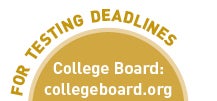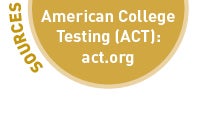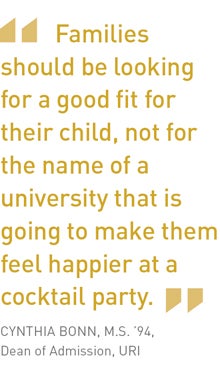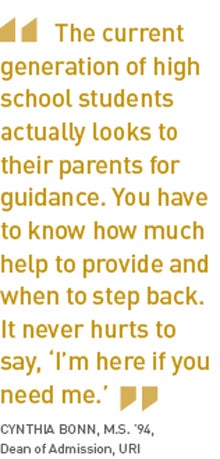A Parent’s Survival Guide to College Admission
 For better or worse, the college admission process has become a family affair. Gone are the days when students managed the entire process with parents on a “need to know” basis, when admission letters were delivered via U.S. Postal Service, and when a parent’s pivotal role was writing the SAT-fee check to the College Board.
For better or worse, the college admission process has become a family affair. Gone are the days when students managed the entire process with parents on a “need to know” basis, when admission letters were delivered via U.S. Postal Service, and when a parent’s pivotal role was writing the SAT-fee check to the College Board.
Today, there are hundreds of guidebooks and dozens of websites and blogs designed to demystify an increasingly complicated process. We turned to two experts, Cynthia Bonn, M.S.‘94, URI dean of admission, and Eddie Cronan ’72, M.A.’76, college guidance counselor at LaSalle Academy in Providence, to help us peek behind the curtain. And take heart; our experts’ take-home message is that many schools out there will be a good fit. The idea of the one, perfect school is a shop-worn myth.
Freshman and Sophomore Years: Setting the Stage
The first two years of high school are a time to lay the foundation for the critical junior year. Solid study habits and time management skills will prove invaluable in the college search, as will the ability to independently recognize when it is time to ask for help.
These are also years when students can become comfortable exploring college and university websites, as well as collegeboard.org. No need to search too seriously, but this is a good time to investigate the tools offered by your school’s guidance office, such as the online organization site Naviance.
Junior Year: The Fun Begins
At the start of the year, your role is to tactfully recommend that your student takes advantage of all college planning programs offered at the high school guidance office. These may take the form of meetings, events, college fairs, one-on-one sessions, and email alerts.
Tip: Only you know whether your student requires reminding, nudging, or even nagging to adhere to deadlines. To the extent possible, do not insert yourself into the process unless asked.
 Fall Semester
Fall Semester
Your students will take the PSAT/NMSQT (Preliminary Scholastic Aptitude Test and National Merit Scholarship Qualifying Test). This test is “practice” for the SATs, and is used to determine eligibility for National Merit Scholarships. Students can choose to have their scores reported to colleges interested in students scoring in their range; those schools will, in turn, send a barrage of information.
December Break
Both Bonn and Cronan recommend that students take time over the December break to compile a list of schools that interest them. Encourage your student to use online research tools, like those offered by the College Board, to plug in search criteria that will help craft the list. Only become involved in list creation if asked.
Spring Semester
Your student will meet with a guidance counselor to start honing the list of schools to consider. Some schools also offer a kick-off college search meeting for parents and students early in the spring semester.
During the spring semester most students will also take SATs or ACTs. They may also take SAT subject tests, also known as SAT IIs, in May or June.
Spring Break
This is a chance for you to become involved in a meaningful way. If possible, visit several schools with your student, large and small, rural and urban, so students can get an idea of where they feel comfortable—they may be surprised. Many schools have Saturday visiting options. Bonn urges families to go while schools are in session, tap the usually helpful “Visit” section of the school’s website, and: “Go on the official tour. The tour guides are trained to present the greatest amount of information in the most efficient manner possible.”
Tip: If your student is particularly interested in a school, return for a fall semester visit. Some schools offer fall open houses with presentations by faculty, student clubs and organizations, and top administrators.
Understand that students may wish to go on tours or attend information sessions without you. They may also want to connect with other students they know. Follow their lead and you will have a more successful visit, even if you end up hanging in the college bookstore café by yourself.
Tip: Cronan and Bonn agree that students should apply to a reasonable number of schools—no more than eight to ten if possible. Thanks to the Common Application, there is a great temptation to apply to far more. Bonn emphasizes, “The longer the list, the more stressful the process.”
Summer
Continue exploration, including visits, although it can be harder to get a feel for a campus when regular classes are not in session. Some schools have robust summer programs, which help.
The Common Application goes online August 1. Cronan advises that once the essay prompts are posted, students should think about drafting their essays.
Early Decision vs. Early Action
Early decision is reserved for the small number of students who are certain where they want to go. Students accepted early decision must commit to attend.
Early action is a great way to go. If you are accepted to one of your top choices early, it takes pressure off the second half of the senior year and you are in no way obligated to attend. There is nothing stopping students from submitting early action and regular applications simultaneously.
 |
 |

Senior Year: Apply
Parents, please note: Do not, under any circumstances, complete your student’s application or write the essay. If asked, review and comment on the essay. Your role is to support, provide guidance, and cheerlead.
Tip: Application deadlines vary. Most early deadlines are in November and December. Bonn recommends completing regular decision applications by early January.
Keep an eye out for acknowledgement and decision letters. The acknowledgement letter from URI, for instance, contains information on how to check the status of your application and see which items you still need to supply. “If you don’t pay attention and check your application status online,” Bonn warns, “there is a chance you will never get a decision letter, because items may be missing.”
 Free Application for Federal Student Aid (FAFSA)
Free Application for Federal Student Aid (FAFSA)
File the FAFSA in January of your student’s senior year. The application is submitted online and requires electronic signatures from both a parent and the student applicant.
Don’t wait until your taxes are done; use estimated numbers, and make adjustments after you file your tax return. “The advantage to filing early,” says Bonn, “is that there will be no ‘packaging delay,’ on your financial aid.” In other words, the sooner you file FAFSA, the sooner schools will calculate your financial aid package, which may include federal loans, state loans, and institutional loans or grants.
For Rhode Island parents, Cronan recommends the College Planning Center of Rhode Island, part of the Rhode Island Student Loan Authority (RISLA), for assistance completing the FAFSA. See risla.com/college-planning-center.
Decision Time
By early April, most students will have received word from all the schools to which they have applied. Many will be fortunate to have choices, in which case accepted-student visiting days can help them winnow options.
“If the financial package is similar at more than one institution,” Bonn advises, “let your student make the final decision. Step back.”
May 1 is the deadline for a deposit that ensures your student’s place, and is also the deadline to secure housing at many colleges.

Your student may wish to remain on one or more waitlists, in which cases no deposit is due at those schools. But it is vital that they pay a deposit somewhere by May 1.
If students have their heart set on a particular college or university that has waitlisted them, they should stay in touch with the school. That means them, not you. Parents should not reach out to schools on their children’s behalf.
Independent Admission Counselors
There’s plenty of humor in the blogosphere—at The Neurotic Parent, for instance—poking fun at parents who hire pricey independent admission counselors. But Bonn, after 30 years in admissions, sounds a more serious note. Not only are independent admission counselors not able to work miracles, but admission officers, she cautions, can spot a “packaged” applicant: “Most admission officers are considering the same things: transcript, difficulty of classes, test scores, community involvement, leadership, and character. An independent counselor cannot change your child’s profile or the supporting data.”
But, she adds, if you are concerned about access to the guidance counselors at your student’s high school, or you think your student requires more one-on-one help, an independent advisor could be right. The Independent Educational Consultants Association (iecaonline.com) is an excellent resource.
The last word: It is not an irreversible decision! After the end of freshman year or even the first semester, if your student is unhappy or wants to study something that is not offered by the college or university they chose to attend, they can transfer!
Learn more:
—Melanie Coon
Illustrations: Randy Stevenson ’10
 Home
Home Browse
Browse Close
Close Events
Events Maps
Maps Email
Email Brightspace
Brightspace eCampus
eCampus


